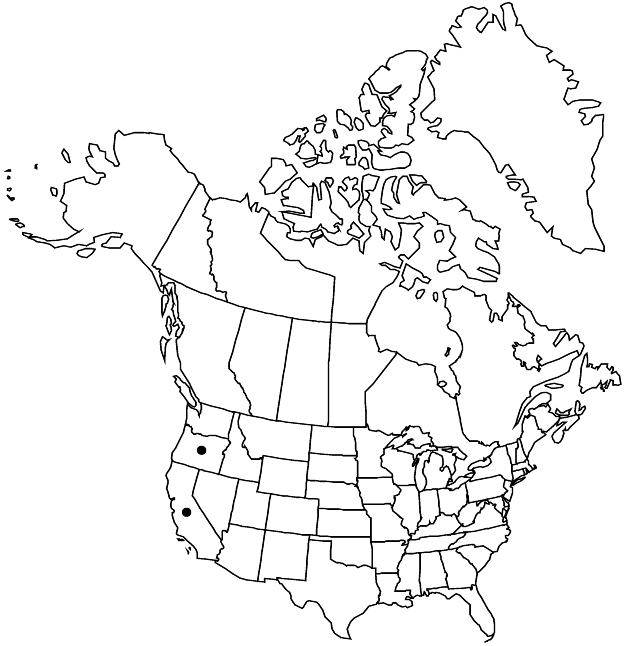Sedum oblanceolatum
Sedum N. Amer., 404, figs. 113, 114. 1975,.
Herbs, perennial, cespitose, glabrous. Stems rootstocks, erect, branched from base, bearing rosettes. Leaves alternate, erect, sessile; blade green, appearing whitish because of pruinose covering, margins green, not white, strongly pruinose, not glaucous, narrowly obovate, laminar, 7–38 × 5–9 mm, base spurred, not scarious, apex usually obtuse to truncate, sometimes emarginate. Flowering shoots erect, simple, 6–15 cm; leaf blades oblanceolate-oblong, base short-spurred; offsets not formed. Inflorescences dense, paniculate cymes, 30–60-flowered, 7–9-branched; branches not recurved, somewhat forked; bracts similar to leaves, smaller. Pedicels 3–5 mm. Flowers 5-merous; sepals erect, connate basally, green, appearing blue-green, glaucous, lanceolate-oblong, equal, 4–7 × 1.5–3.2 mm, apex acute, (papillose); petals erect, connate basally, creamy white, oblong, not carinate, 8.5–11.5 mm, apex acute, mucronate; filaments white, becoming reddish; anthers yellow; nectar scales yellow, transversely oblong. Carpels erect in fruit, connate basally, brown. 2n = 30.
Phenology: Flowering summer.
Habitat: Rocky slopes, in crevices, edges of rocks
Elevation: 400-1600 m
Discussion
Sedum oblanceolatum is restricted to the upper Klamath and Applegate river basins in Jackson County, Oregon, and Siskiyou County, California. Represented by relatively few individual plants, it occurs on a wide range of substrates including phyllite-schist, schist, metavolcanics, metasedimentary, as well as ultramafics like serpentine, soapstone, and peridotite. It is of conservation concern in California.
Selected References
None.
